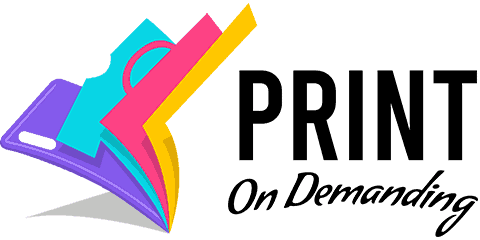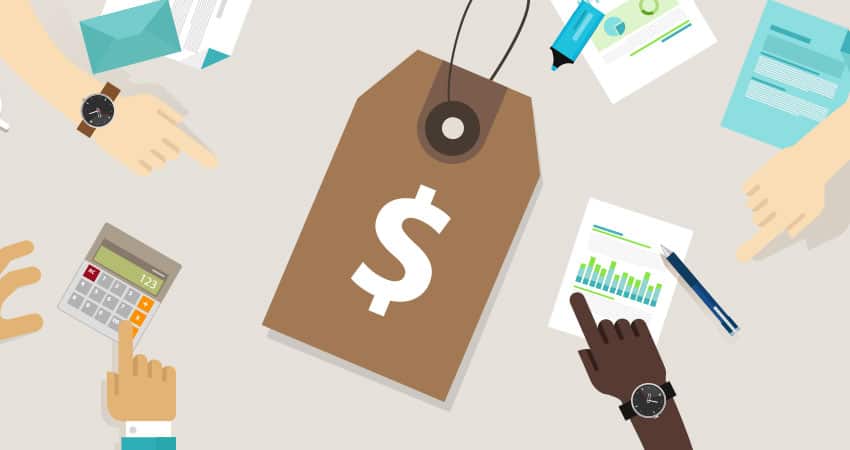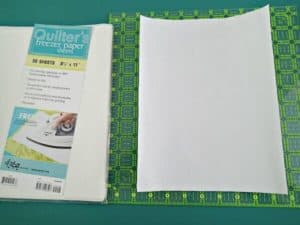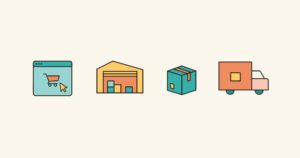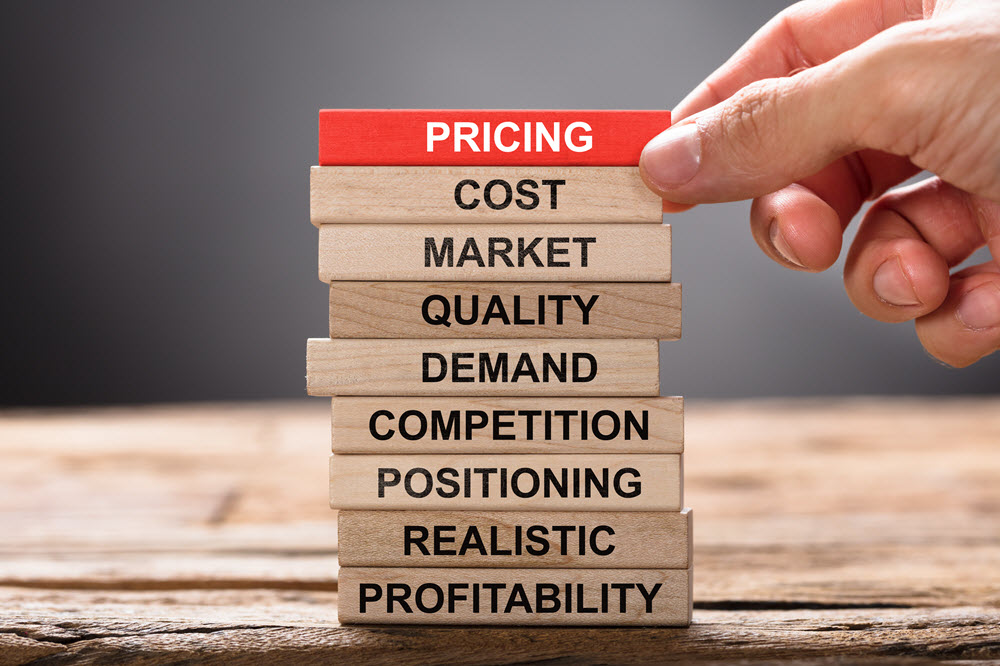
An important guide to pricing print-on-demand goods
The price of a product has an impact on how effectively your online shop competes and the income you earn.
We’ll walk you through the four major stages for pricing your print-on-demand goods during the session week. We’ll go through how to price your Printful goods in detail using a basic t-shirt as an example.
STEP ONE: EVALUATE THE COST OF YOUR PRODUCT
The most essential goal of your product’s pricing is to keep your company afloat. Before you can worry about how your pricing compares to those of your rivals or if they satisfy consumer expectations, you must first establish a viable base price. It will be almost difficult to develop and scale your business if you price your goods at a loss.
That is why you must evaluate your expenditures. The entire cost of creating and selling your product is known as the product cost. If you offer print-on-demand or drop-shipped items, you’ll want to start with the amount you pay for each item’s creation. However, there are other costs to consider.
1. COSTS OF DESIGN
If you’re outsourcing design services, dividing the amount you pay the designer by the number of product units you anticipate to sell is one method to keep design expenses in mind. This is particularly important if you intend to release the design in a limited quantity or as a limited-time offer since this limits how much profit you can make from it.
DESIGN COST PER PRODUCT = DESIGN PRICE / NUMBER OF DESIGNS YOU PLAN TO SELL
However, you can’t always be certain how many designs you’ll sell. If this is the case, you may work backward and determine how many units of your product you’d need to sell to break even at your chosen pricing after you’ve determined your price and profit margin. This way, you’ll know the minimum number of units you need to sell and may modify your profit margin if the figure is too high. Keep in mind that we’ll go through this procedure together after the video.
MINIMUM ORDERS TO SELL = DESIGN PRICE / YOUR PROFIT MARGIN
If you make your designs, it’s easy to overlook design expenses to keep the selling price low. Of course, there are many free design tools available, such as Printful’s Design Maker. However, that time spent on your product is still important, so make sure you compensate yourself for it.
My greatest advice is to figure up a reasonable hourly fee for your job. Then add it to the price of the goods. This will also assist you in determining the efficiency of the time you spend working for your company.
HOURS SPENT ON THE DESIGN x YOUR HOURLY RATE = DESIGN PRICE
2. COSTS OF PRODUCTION
The cost of manufacturing is included in the price you pay for each item with print-on-demand services. Printful’s product pricing may be seen on our Product page or when adding items to your store—more on that process later in the video.
3. FEES FOR SHIPPING
While your print-on-demand provider will ship goods for you, your consumers will pay an additional fee. Consider what type of shipping rates to give your consumers, and make sure that if you select a fixed cost, it covers the amount your POD supplier charges you. The cost of shipping varies depending on the goods, fulfillment location, and final destination. To learn more about how Printful handles shipping, watch our film on the subject or visit our Shipping page to view our flat prices.
Another option for dealing with shipping is to provide it for free to your consumers rather than charging them extra. If you provide free delivery, customers are four to five times more likely to purchase anything. You may accomplish this by putting the rates in the basic price of your goods so you don’t have to pay for shipping separately.
PRINTFUL’S SHIPPING RATE + YOUR RETAIL PRICE = YOUR RETAIL PRICE WITH FREE SHIPPING
Shoppers can’t resist receiving anything for free, even if it raises the price of their goods. More on this may be found in our sales psychology video, which has a link in the description below.
4. TAXATION
Then there’s the issue of taxes. Printful may impose a tax on your purchases depending on where your end client resides, such as Sales Tax in the United States, VAT in the European Union, or GST in Australia. You may be required to collect tax from your consumers as well. These costs may or may not be included in the price of your goods, depending on the circumstances.
In the United States, the total might range from 4% to 10%, whereas in the European Union, it could range from 17% to 27%, and it could be computed using a different base price in each location. There’s no way to determine the precise cost unless you know where your client is located. As a result, we highly advise you to speak with a tax expert about your particular circumstances to learn what you need to consider when computing taxes for your product pricing.
5. PER ORDER PLATFORM FEES
Finally, if you want to sell online, you’ll have to utilize one of many platforms. When it comes to setting up and operating an online shop, there are a variety of expenses to consider, ranging from eCommerce platforms and marketplaces to payment processors. While some of these platforms, such as Shopify, have a set price that we will discuss later, others, such as Etsy or eBay, charge you a percentage of your sales in addition to charging you a fee for each listing you create. Some payment processors, such as PayPal, provide a free account and connection to your business in exchange for a transaction fee.
Make sure you’re aware of any additional fees and include them in your product prices.
STEP TWO: ADD A PROFIT MARGIN
Once you’ve gathered all of your variable product expenses, put them together and include profit into your pricing. This is where you may have some fun and play about. Adjust your profit to equal or upsell rivals, and experiment with various price strategies—we’ll get to them later.
RETAIL PRICE = PRODUCT COST + PROFIT MARGIN
Consider the entire market and ensure that your pricing is still within the market’s general “acceptable” price range. It may be difficult to make a sale if you are selling at a price that is two times greater than all of your rivals.
Simultaneously, bear in mind the time and effort you put into your business, and don’t go too low. If you’re spending long hours and your profit margin isn’t covering it, you should either rethink your margin or your efficiency while working on your business.
Once the profit margin has been established at, say, 20%, it’s time to consider the other expenses that must be covered.
STEP THREE: COUNT UP ALL OTHER EXPENSES
It’s no secret that running an online shop comes with a slew of additional expenses in addition to the money spent on getting the goods to the consumer. Monthly eCommerce platform subscriptions and other services, as well as your advertising budget and internet fee, all add up.
Divide all of your monthly expenditures by your profit margin to figure out how many items you’d have to sell in a month to break even.
MINIMUM MONTHLY ORDERS = OTHER MONTHLY COSTS / YOUR PROFIT MARGIN
You must either modify your expenditures or reduce your expenses if the minimal number of designs to sell or the selling price becomes unreasonable. You must expect that budgeting will be a continuous process, and you must be prepared for it.
SUMMARY
To summarize, your retail pricing should include all of your product expenses as well as a profit margin. Designing, manufacturing, and shipping expenses, as well as taxes and platform fees per purchase, may all be included in your product prices. You may modify your profit margin to suit your needs and those of your rivals, but keep in mind additional expenses and the minimum number of orders you must sell to pay them. After you’ve set up this procedure, you may go on to step four, which involves evaluating your pricing.
STEP FOUR: CONTINUALLY REVIEW YOUR PRICES
As I previously said, price is not a choice that you will make just once. While one reason to alter your rates is to ensure that you’re paying all of your expenses and hard work, another is to experiment with various pricing methods as a selling strategy. Here are a few to think about:
1. COMPETITION-ORIENTED PRICING OR MARKET PRICING
As I previously said, a large part of determining your pricing is ensuring that it fits inside the general “acceptable” price range for your market. If you sell at a price that is two times greater than all of your rivals, sales may become difficult. However, there is a method to make it work.
To conduct market or competition-based pricing, you must first compare your goods to comparable things on the market to get the average price. It will provide you with a general sense of the possible pricing range. There are three primary strategies from which to choose:
Pricing more than the market average enables you to outperform your competitors by providing more value to the buying experience. This may be accomplished by including complimentary presents or customized greetings with each purchase, or by opting for a higher-quality visual display (professional photos, store design).
If you want to cover a broad target audience while still making a profit, pricing the same as the market is a safer option. This will place you in the same pricing range as your rivals, allowing you to target the same consumer base.
Pricing below market average – by undercutting your rivals with more attractive pricing, you may be able to capture some of their consumers. However, if you drastically underprice a product, it may not cover all of your expenses and may even seem shady to your consumers.
2. DYNAMIC PRICING OR DEMAND
Demand or dynamic pricing necessitates being up to date on current market developments and consumer preferences. Product prices are determined by demand and seasonality, which necessitates regular price changes. You could, for example, raise the price of hoodies and beanies in the autumn and winter and decrease it in the summer.
3. ANCHOR VALUE
You’ve probably seen anchor pricing in action before. A brand creates a fictitious anchor price before announcing a lower discount price. The price seems attractive, therefore it’s more likely to increase sales from individuals looking for bargains on the internet.
4. REDUCED PRICES
The terms “discount pricing” and “anchor price” are interchangeable. The only difference is that your shop has a beginning price. You establish a beginning price that is higher than the average market price, they have deals regularly to attract bargain hunters. The majority of your sales will come in bursts if you use this approach.
Even if you don’t intend on having regular promotions, keep in mind that famous eCommerce events like Black Friday and Cyber Monday are days when your consumers anticipate seeing discounts on your site. So, while deciding on a price for your goods, keep some space in your budget for future reductions. Don’t place yourself in a position where you’ll have to pay your costs out of your pocket if you get a discount!
PRICING FOR PENETRATION
This approach involves entering the market at a lower-than-average price to attract a big client base, then gradually raising your price as your loyal customer base grows.
This approach is often used by beginning businesses that go on to become market leaders, such as Netflix.
It’s easy to sit back and maintain your current pricing, but this is a mistake. Demand for your goods may increase or drop, and extra product expenses may arise, all of which should cause your retail product pricing to fluctuate.
EXAMPLE OF PRICING A PRINTFUL T-SHIRT
Now comes the exciting part: putting what we’ve learned into practice! I’m going to price a standard Printful shirt on a Shopify shop for this example. For this, I prepared a unique excel sheet; you may find it in the description below and use it to follow along as we go, or make a duplicate and use it as a starting point for your work later.
Keep in mind that this is just an example of the procedure you will follow. Any prices I indicate here may have changed by the time you see this video, so don’t take them for granted. To obtain the most accurate cost estimate, do your research.
STEP ONE: EVALUATE THE COST OF YOUR PRODUCT
1. COSTS OF DESIGN
Let’s start with the expenses of design. Using free sample designs of Printful and the Design Maker, I created this design. Even though it only took me about 10 minutes to create, I’m going to value that time and calculate my design fee accordingly.
HOURS SPENT ON THE DESIGN x YOUR HOURLY RATE = DESIGN PRICE
My hourly fee will be $45 per hour, multiplied by the time I spend on my design, which will be 1/6 of an hour. This design will set you back $7.50.
DESIGN COST PER PRODUCT = DESIGN PRICE / NUMBER OF DESIGNS YOU PLAN TO SELL
If I could sell ten of these designs, the cost per design would be $75. However, I’d rather include this in my fixed expenses later and evaluate how many designs I need to sell to break even.
2. COSTS OF PRODUCTION
Then there’s the issue of manufacturing expenses. While certain Printful pricing may be seen on the Products page, the ultimate price of each order is determined by variables such as manufacturing method, print positioning, product color, size, and fulfillment location. Use our product push generator to push goods to your shop for the most exact pricing.
I’m planning to put a print on the front and an outside label on the back of this shirt. Keep in mind where your clients are situated to pick colors and sizes that are supplied at the nearest feasible place to them. I’m going to keep it here since my target audience will be from the United States.
We’ll go on to the price tag once I’ve chosen my mockups and product descriptions. As you can see, the Printful pricing varies depending on the shirt’s size and color. There are four approaches to calculating your manufacturing cost based on the size difference.
For starters, I could price each size or size group as a separate item. So this design will cost me $14.98 in sizes XS to XL, but $16.43 in size 2XL. I’ll wind up with a different retail price for size 2XL if I build pricing this way, which isn’t always optimal. This leads us to the second possibility.
Calculate the cost of the item using the most costly size. It would be $16.43 this time. If a client purchases an (XXS to XL size shirt for $14.98, I gain an additional $1.45. If they purchase a 2XL, I pay all of my expenses. This works only if I’m not trying to offer cheap retail prices—in that case, every dollar matters!
Calculate the cost of the product using the least expensive size. If a client purchases an XS (Extra Small) to XL (Extra Large), I pay all of my expenses. If customers purchase a 2XL, I spend $1.45 out of my pocket, reducing my profit but maintaining my cheap pricing.
Finally, I was able to determine the average cost of all sizes. I’ll add them all together and split them by the number of sizes I have available. In this instance, it’s $15.22. Now, whenever I sell a size XS to XL, I earn 24 to compensate for the loss of $1.21 on each 2XL sold.
In this case, I’ll go with the third option and estimate the cost to be $15.22 before taxes.
3. FEES FOR SHIPPING
I have to examine where my clients are situated to obtain an estimate of my delivery expenses. This is significant to me because I want to provide free delivery to all of my American clients.
PRINTFUL’S SHIPPING RATE + YOUR RETAIL PRICE = YOUR RETAIL PRICE WITH FREE SHIPPING
If I go to Printful’s Shipping website, I notice that delivery for shirts in the United States will cost $3.99, which I’ll add to my expenses to provide free shipping to the United States on my shop.
4. TAXATION
I am not responsible to pay tax since I intend to sell this shirt mainly in Alabama, but I do not have a physical presence or economic connection there, so I just need to consider the tax that Printful will charge on my purchases. As previously stated, the sales rate varies by region, and the precise tax for each purchase will be determined once it is made. However, I checked up the combined Alabama sales tax rate, which is 9.14 percent, and I discovered that Printful’s pricing is the sales tax base in this state.
For sizes XS to XL, that’s $14.98 multiplied by 9.14 percent, and for size 2XL, it’s $16.43 multiplied by 9.14 percent. XS through XL is $1.37, while 2XL is $1.50. I’ll do the same thing I did with manufacturing expenses and take an average of those rates. That’s $1.39 in taxes, which I’ll include in my product cost.
Remember to speak with a tax expert about your particular circumstances to learn what you should consider when computing taxes for your product pricing.
5. PER ORDER PLATFORM FEES
I’m utilizing Shopify, and I need to keep in mind that each transaction will cost me 2.9 percent + 30 percent for each order. I don’t think there are any additional costs per product that I’m aware of, so I’ll just add them all together.
OVERVIEW OF THE COSTS
To bear in mind, $15.22 for manufacturing expenses, $3.99 for delivery, $1.39 for taxes, and $30 to Shopify +2.9 percent of my retail price. That works out to $20.90 after subtracting 2.9 percent from the retail price.
PRODUCT COST + PROFIT MARGIN = RETAIL PRICE
STEP TWO: ADD A PROFIT MARGIN
After that, I’ll add my profit margin. To begin my computations, I’m going to add 20% to my expenses. That’s $20.90 plus 20%, for a total of $25.08. I’m going to go with $26 as a round number.
Now that I have my retail pricing, I need to include in the 2.9 percent Shopify will charge my orders, which is $75, bringing my total expenses to $21.65 and my profit margin to $4.33.
STEP THREE: COUNT UP ALL OTHER EXPENSES
Now I need to figure out what additional expenses I’ll have in a month. My monthly Shopify Basic membership is $29 per month. In addition, I purchased a name from Domain.com to make my website seem more professional.
